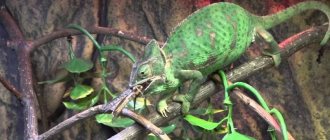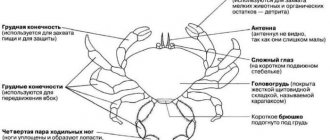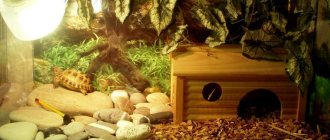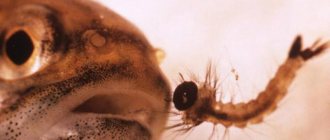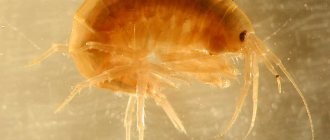There has always been and remains a fashion for exotic animals. The most common species among exotic animals is the red-eared turtle. Before you get such an exotic pet, you need to evaluate your capabilities. To keep an aquatic turtle, you will need more than just a huge aquarium. The red-eared turtle is a predator that requires special nutrition, which is quite expensive. Need to know, what to feed a red-eared turtle at hometo raise a healthy pet.
What do turtles eat in the wild?
The main component of the diet of red-eared turtles in the wild are shellfish: mussels and snails, oysters, and crustaceans. They have no teeth, but this does not prevent them from excellently dealing with mollusk shells: with strong jaws they break them and eat the pulp.
In the summer, insects become food for turtles: grasshoppers, beetles, etc.
They are very fond of algae, plankton and small fish. They also eat tadpoles, fish fry and frogs.
Diet of the red-eared slider
A necessary aspect of caring for turtles is preparing the right diet. The health of your pet depends on feeding high-quality, fresh and, importantly, varied food. How the red-eared turtle feeds, how long it lives, and how it feels are closely interconnected.
In captivity, this reptile has little demand for food. For a tough shell and healthy skin, reptiles require both plant and animal products. For turtles up to one year old, the latter must be included in the diet in an amount of 80% or more.
A reptile's hard shell requires plant and animal products.
Mature turtles need to increase the amount of plant foods rich in fiber and vitamins. As a result of eating only meat, pets can develop rickets, hypovitaminosis or obesity.
The required vitamins and dietary supplements must be regularly added to food.
Recommendations for how many times per day to feed your red-eared slider will depend on the age and preferences of the individual reptile.
Red-eared turtle babies up to 1-1.5 years old should have one or two meals a day. If you have no appetite, reduce the amount of food or go on a short hunger strike for 1-2 days.
To create an optimal nutritional regimen for an adult, you should observe the pet and feed it on demand. If a turtle is hungry, it becomes overly active in the presence of its owner, hitting the water with its paws. After feeding, she calms down and rests calmly. A turtle may require food daily, or maybe once every 7 days.
The number and size of feeding portions also depends on the type of food. If a turtle has a balanced menu, it can refuse food even for several days.
A turtle may require food daily, or maybe once every 7 days.
The constant presence of live plant food in the aquarium also affects the frequency of feeding.
When the red-eared turtle does not ask for food itself, you can give it food once a day. If she eats everything well, then continue to feed her that way. In case of malnutrition of a significant amount of food, you should try to feed it once every 2, 3-7 days, that is, find out its needs experimentally.
It is important not to overfeed the animal; it is better to leave it a little hungry, but healthy.
Omnivores
Despite the name, semi-aquatic and marsh turtles are the most demanding in terms of food composition. In addition, their diet can change significantly during the period of growing up.
The optimal composition of the diet depends solely on the type of turtle. In addition, it is necessary to determine how many times to feed small turtles, whose main diet consists of food of animal origin.
Basic feeding rules
To properly feed a red-eared turtle, you must comply with the basic conditions and some subtleties:
- Any food needs to be cut into pieces: the smaller the turtle, the smaller the pieces.
Any food needs to be cut into pieces
- Aquatic reptiles tear large pieces with their sharp claws, so that plant food can be fed whole.
- Before serving, products must be washed, seeds and peels removed.
- The pet should eat the food within 30 minutes. The serving size should be calculated based on this indicator, and should not exceed half the size of the shell. You can also give pieces of food the size of the reptile's head.
- Feed should be given at room temperature. Very cold food is harmful to your pet's health.
- Turtles search for food using their vision. The more attractive the color of the food, the faster she will find and eat it. For this you can use carrots and tomatoes.
- It is better to feed your pet in the morning, but it is not essential. It is important that she has time to digest what she eats during daylight hours or with the lamp on.
- Uneaten food must be immediately removed from the reservoir - this way the reptile will develop the habit of eating at certain hours.
There are different ways to feed armored animals: with tweezers, from a special bowl, or by throwing them into water.
You can feed red-eared turtles with tweezers
It is best to feed the red ear in another aquarium or basin, because leftover food will contaminate the terrarium, and the water will have to be replaced frequently.
You can also teach him to eat on an island equipped in the aquarium. First, food is placed at the very edge of the shore near the water. If the reptile is hungry, it will have to take food. So gradually get used to eating from a small saucer with water.
You should not hand feed your reptile too often to avoid getting used to this method of feeding and refusing to eat differently. There is also a risk of being bitten.
You cannot distract your pet while eating: sudden movements and loud sounds frighten him.
Aquatic individuals
Aquatic turtles need to be fed differently from terrestrial turtles. The basis of their diet is food of animal origin. It can be worms and bloodworms. Pet stores have ready-made food for turtles and dry gammarus. All this is in addition to the general diet.
The basis of nutrition for aquatic turtles is food of animal origin. It can be worms and bloodworms.
With age, the quantity and variety of food increases accordingly and feeding turtles becomes more complicated. The diet of aquatic individuals must already include all types of meat: beef and chicken. You can give fish, but not often. Any food is suitable both raw and boiled. Such products should be served pre-sliced.
Be sure to buy living creatures that should be present as the main food of aquatic pets: cockroaches, bugs, larvae. Without it, the correct formation of all organs in aquatic turtles is impossible. This turtle food is sold in any pet store.
Feeding frequency has its own characteristics:
if the food remains uneaten, you should immediately remove it from the aquarium; Feeding duration is half an hour, then remove the food so that over time the pet develops a routine and eats at certain hours; pay attention to the temperature of the water, if it is room temperature, feed the animal once a day, a higher temperature indicates the need to double the feeding; Do not overfeed individuals, but do not force them to suffer from hunger.
What can you feed your red-eared slider?
At home, you can use special food purchased at a pet store to feed your red-eared reptile. If your pet shows signs of illness, for example, a red-eared slider's shell is peeling off, you should pay attention to the quality of its diet.
For the main diet, meat and offal, cottage cheese and eggs are used, as well as fish, seafood and insects. The use of various types of plants, vitamin and mineral supplements is recommended.
Animal feed
This food serves as the basis for the diet of aquatic turtles. For a growing animal, the portion size and variety of food should be increased.
Red-eared turtles prefer live food: snails, small fish, insects and crustaceans. Such nutritional components will be good for diversifying your diet, but you shouldn’t get too carried away with them. It is enough to apply them 2 times a month.
Red-eared turtles prefer live food, but you shouldn’t get carried away with it
Food can be served either raw or cooked, unsalted and unseasoned, divided into pieces.
Meat
The red-eared slider's diet may include lean beef, horse meat, rabbit, chicken and turkey.
Reptiles also eat minced meat. Finely chopped plant food is added there if the turtle refuses it.
By-products
By-products should be added systematically to the red ear's diet. From a wide variety, you should choose only beef or poultry liver and heart. They contain a significant amount of vitamin A, which helps normalize the growth of the pet and maintain healthy skin. Due to a deficiency of this vitamin, detachment of the horny scutes, development of conjunctivitis, etc. are possible.
By-products should be added to the diet systematically
It is recommended to give liver only to adult turtles once every 30 days.
Cottage cheese and eggs
It is difficult to feed cottage cheese to replenish calcium levels to a turtle - it disintegrates in water. But they like to catch it and eat it.
Eggs are used raw, mixed with various types of products.
Fish and seafood
Fish is recommended in raw low-fat varieties (up to 3.0%), such as hake, blue whiting, pollock and cod, and freshwater perch. River species are best suited.
Before feeding, you can remove large bones from the fish, but leave the giblets, because the turtle needs all the useful substances contained in the fish to maintain the rigidity of the shell and skeleton as a whole.
In order to eliminate the negative effects of thiaminase in raw fish, immediately before feeding, it is necessary to put it in hot water for 2 minutes.
Among marine products, green shrimp are used as food for reptiles; they enjoy octopus and squid, and eat mussels and snails.
Reptiles enjoy eating octopus, squid, and shrimp.
If there are fish or frogs living with the turtle, there is a high chance that it will eat them.
Insects
The menu of the red-eared turtle should include insects: beetles and hairless caterpillars. He loves to eat grasshoppers and crickets, earthworms, and also eats mealy bug larvae.
In summer they are collected in the garden and park. But you can’t collect it where it has been treated with chemicals.
Cockroaches caught at home should absolutely not be given in order to avoid insecticide poisoning.
Pet stores sell bloodworms and mealworms to feed armored reptiles.
It is recommended to purchase gammarus - small dried crustaceans. It contains a significant amount of calcium. Koretra and daphnia are also suitable food for your pet.
Insects are used as food for the turtle 1-2 times a week.
Fruits
All types of fruits contain many vitamins.
To the question whether a red-eared turtle can have an apple, there is one answer - you can also have a pear, a banana, an orange and a peach, or a plum and an apricot. Only citrus fruits should be peeled.
You can give your red-eared turtle apple, pear, banana and other fruits.
It is also recommended to occasionally give strawberries, wild strawberries, and pamper your pet with raspberries and other berries. The turtle can also have melon and watermelon.
Vegetables
Vegetables are rich in fiber, which is very beneficial for the gastrointestinal tract, and in particular, the process of food absorption, as well as vitamins A and K, calcium.
These reptiles eat cucumbers, zucchini, cabbage leaves, and red tomatoes, bright sweet peppers, pumpkins, carrots and beets attract their attention. You can even offer beans and asparagus.
They are given raw, without signs of spoilage and without mold. Cooked vegetables have no benefit for the turtle.
Mushrooms
Along with vegetable and fruit food, the red ear can be fed once every 7 days with mushrooms: slices of russula, champignons and boletus.
Greens and plants
These products are also important in the diet of turtles. They must consume them at least 50% of the total diet, and for older turtles this figure reaches 75%.
It is also recommended to feed these reptiles indoor plants, for example, thornless cacti and agave, tradescantia, hyacinth and hibiscus. It is very useful to feed with herbs from meadows, dandelion, coltsfoot, as well as plantain and clover. These reptiles have a good appetite for carrot and beet tops, lettuce leaves, basil and parsley, and dry hay. It is recommended to feed with sprouted wheat or oats (cut sprouts 5-10 cm).
These reptiles have a good appetite for carrot and beet tops
The greens are picked in the garden or in the forest far from roads, sorted and washed.
Aquatic plants, for example, duckweed, hornwort, pistia, water hyacinth, etc. are extremely useful for these reptiles.
It is better to breed them separately. After all, the algae growing in an aquarium with red ear is constantly plucked by it, which disrupts the landscape design. Having eaten algae, she may not accept other food.
Duckweed can be caught from a nearby pond.
Toxic algae (elodea and limnophila) are destructive to turtles.
Plant food
The diet of an adult turtle should be dominated by plant components . The older she is, the more vegetarian dishes are on the menu.
Grass
Little Reds eat their coltsfoot with gusto. Also great for:
- leaves of plantain, clover, dandelions;
- sprouted oats and barley.
Aquarium plants
Seaweed is a good addition to the menu. Duckweed, watercress and any plants from natural bodies of water are suitable
Vegetables
Turtles love kibble:
- bell peppers;
- zucchini;
- eggplant;
- cucumbers;
- tomatoes;
- carrots;
- beets;
- pumpkins.
Mushrooms
Once a week, champignons, russula or boletus , cut into small pieces, are added to the regular diet.
Artificial feed
Pet stores have a wide variety of balanced foods specifically for armored reptiles. They can come in various forms: capsules, tablets, granules and even flakes. And their compositions will vary. But for the most part, the food produced by the manufacturer often does not satisfy all the needs of the reptile’s body.
In essence, turtle food is food for aquarium fish that has been improved to meet the needs of the reptile's body. Due to the specific smell, pets may even ignore it, but over time they get used to it.
This type of feeding is convenient, but you cannot feed it alone
This type of feeding is convenient primarily for busy people, but it is not the only way to feed. Such feeds often do not maintain the balance recommended by veterinarians, which can lead to vitamin deficiency and digestive problems for the animal.
Mineral mixtures and vitamins
It is necessary to feed the aquatic turtle with vitamin and mineral mixtures. Active growth, healthy skin, and proper development of the skeleton and bone tissue depend on them.
Aquatic turtles receive useful substances not only from a variety of foods, but also from special supplements. The diet of such a pet should contain moderate amounts of vitamins A, B12, D3, E, as well as minerals such as selenium and calcium.
Regular feeding with calcium-containing preparations is especially important for turtles to strengthen their shells, especially in growing young individuals. With calcium deficiency, it can become crooked and lumpy. Claws may also become bent, limbs may occasionally break, and in extreme cases, the shell may even fall apart or become like cardboard. In nature, sources of calcium for turtles are limestone, oyster shells, corals, dolomites, and animal bones.
Calcium-rich foods include the popular gammarus. A significant amount of it is found in bone meal, ground egg shells, and also in feed chalk. They are given 100 mg of the mixture per 1 kg of pet’s weight once every 7 days.
The most applicable drugs are purchased at a veterinary pharmacy or pet store.
Feed containing vitamins and minerals (except calcium) cannot be stored for a long time. Vitamins for the prevention of vitamin deficiency C and E and mineral supplements are given only once a month, mixed into the food.
Vitamins and mineral supplements are given only once a month, mixed into the food
To ensure that the turtle consumes all the added nutrients, you should mix them with food and feed them by hand.
Ready-made food in a pet store
Dry food for red-eared turtles can be used only in cases where it is not possible to maintain a balanced diet using natural products.
Although manufacturers promise to fully satisfy the reptile’s needs for the necessary substances, they do not recommend making semi-finished products a monotypic type of food in order to avoid metabolic disorders and problems in the gastrointestinal tract.
Food for cats and dogs
It is not recommended to use either dry or wet dog or cat food for feeding red-eared turtles.
This combination food is specially developed in the optimal ratio for feeding warm-blooded animals, so it is not suitable for reptiles. It contains a set of substances that are absolutely useless for turtles.
Vitamin and mineral supplements for these pets also do not meet the needs of the turtle’s body.
Homemade food for red-eared turtles
It is possible to prepare food for pets with shells yourself at home.
For this you will need:
- cabbage – 50 g;
- squid meat – 100 g;
- lean fish – 145 g;
- carrots – 70 g;
- apples – 50 g.
Grind all the components using a meat grinder, break 2 eggs into it. Dilute 30 g of gelatin in 150 ml of hot water. Mix all ingredients thoroughly with 150 ml. milk.
Grind all components of the feed using a meat grinder
Keep in the refrigerator for 7 days only. Feed in small pieces. This food is enough for 10 meals for one turtle with a shell length of 15 cm.
If you replace gelatin with agar-agar, the food will dissolve more slowly in water.
Here's another recipe for making your own food.
Take the following products:
- squid – 0.3 kg;
- pollock – 1 kg;
- shrimp – 0.5 kg;
- gelatin or agar-agar – 150 g;
- hake – 1 kg;
- water – 750 ml.
Prepare the mixture as follows:
- Grind fish and seafood in a meat grinder.
- Dissolve agar-agar in water and let it swell.
- Mix the resulting minced meat well and heat over low heat for 10 minutes.
- Add dissolved agar-agar, mix thoroughly for 15 minutes.
- Pour the prepared mixture onto a baking sheet or into a plastic container and let it cool completely.
- Place on the refrigerator shelf for 5 hours.
- Cut the resulting mass into small pieces, wrap each in a piece of foil.
- Place them in the freezer.
For feeding, a portion of frozen food is taken out 4 hours in advance and thawed at room temperature.
The food is taken out 4 hours in advance and thawed at room temperature.
This supply will be enough for a red-eared pet with a shell size of 20 cm for a whole year.
Vitamin and mineral complexes
Turtles need calcium to form their shell. fill the need for microelements with the help of bone meal - it is mixed into the food.
A pinch is enough for young redears; for older ones, a teaspoon is “stretched” for a week.
In addition, special vitamins for turtles are added in accordance with the instructions, but the shelf life of such food is limited.
What not to feed
These aquatic reptiles eat whatever is offered to them. But they cannot digest all the food they eat, which leads to disruptions in the gastrointestinal tract and, consequently, to diseases.
What not to give to a turtle:
- fruits and berries with seeds;
- food from the table;
- sea fish;
- fatty freshwater fish;
- citrus peel;
- flour products;
- onion, radish;
- Turtles have difficulty digesting pork and lamb fatty meat;
- poisonous elodea;
- amber snails.
You should not give a lot or often tomatoes, cabbage, legumes, spinach.
Prohibited Products
In addition to recommendations containing a list of the best foods for the development of a pet, there is also a list of prohibited foods that should not be given to turtles under any circumstances. This:
- flour products: bread, buns, etc.;
- spinach, peas, rhubarb;
- tomatoes;
- citrus fruits: oranges, tangerines, grapefruits, pomelo;
- nuts;
- lamb, pork;
- dairy products: cottage cheese, milk, sour cream;
- fried or boiled food;
- cheese;
- radish;
- White cabbage;
- mushrooms;
- food intended for fish or other animals;
- fruit seeds;
- fatty fish;
- squid;
- crab sticks.
Red-eared turtles are predatory creatures, and with proper care, the creatures can delight the owner with a funny appearance and longevity. One of the most important aspects of keeping and caring for turtles is the diet, because only when fed with high-quality, fresh and varied food will the pets not get sick.
What can overfeeding cause?
An important condition for the nutrition of a red-eared pet is not only a variety of diet, but also a regime. Overfeeding leads to diseases: pyramidal shell and obesity.
Not only the diet, but also the regimen is considered an important condition for nutrition.
Overeating in juveniles is extremely harmful, because they are actively developing, as well as during the adaptation period after purchasing or after illness of a red-eared turtle.
It is not recommended to force feed turtles. But long-term fasting is also contraindicated for them.
A healthy reptile should swim freely in the water and easily crawl onto the island. Excess weight will prevent the turtle from hiding its head in its shell.
Health and illness
More than 85% of all diseases of red-eared turtles are the result of improper care, maintenance and feeding, and most often all at once.
Maintaining clean water and the right temperature for your pet is as easy as creating the right conditions.
Here are the basics to help you keep your turtle healthy:
- Sick turtles should be kept at a higher temperature, in most cases 27-30 Celsius. At this temperature, the immune system operates at its peak efficiency. It is important to maintain fluid balance in the turtle's body so that it does not become dehydrated. Ensuring that she drinks and is in water is more important than her nutrition, since a sick turtle can die from dehydration and its kidneys will fail. Even in emaciated turtles, fluid balance is first restored, and then feeding begins.
- A sick turtle swims poorly, swims on one side, and may even drown. Reduce the water level and make sure she can come ashore as soon as she wants.
- If you suspect an infection, immediately isolate the animal and be sure to wash your hands after handling it.
- The basis for success in treating a turtle is contacting a specialist. Do not treat the animal yourself, go to the veterinarian!
Drinking regime
Red-eared turtles from the family of freshwater turtles live in the wild in small lakes with well-warmed water by the sun or ponds with swampy shores. For these reptiles, fresh water is vital (they cannot live without it for even a couple of days). The redfish spends its entire life in water - activity and sleep, eating and the process of defecation.
The red-eared turtle spends its entire life in water - activity, sleep, eating
The question of whether a turtle has a need to drink has not been fully studied. The structural features of her body do not allow water to linger: in the process of drinking, it pours out of her nostrils and flows down her neck. Moisture, so necessary for reptiles, penetrates through its skin, as well as from the products it eats.
Features of feeding small turtles
Particular attention must be paid to feeding turtles, because a deficiency of vitamins can negatively affect their development.
Young turtles are predatory animals, so they often ignore plant foods. Animal food plays a predominant role during their feeding period. They require food 1 or even 2 times every day.
Juveniles desperately need calcium and vitamin D. They should be added to their food at every feeding.
Baby turtles desperately need calcium and vitamin D intake
One of the rules for feeding baby turtles is to serve pieces of food the size of a blueberry.
How long can a turtle not eat?
A red-eared slider may not eat at all for 10 to 90 days; this period is individual for each individual. Young turtles can starve for the least amount of time. In this case, reptiles can lose up to 40% of their mass. But you should not starve them; you should offer food regularly.
When keeping such turtles at home, it is necessary to create feeding conditions for them that are as close to natural as possible. And then the pet will be able to remain active and healthy for a long time.
What do you feed your red-eared pet? Share your experience in the comments.


